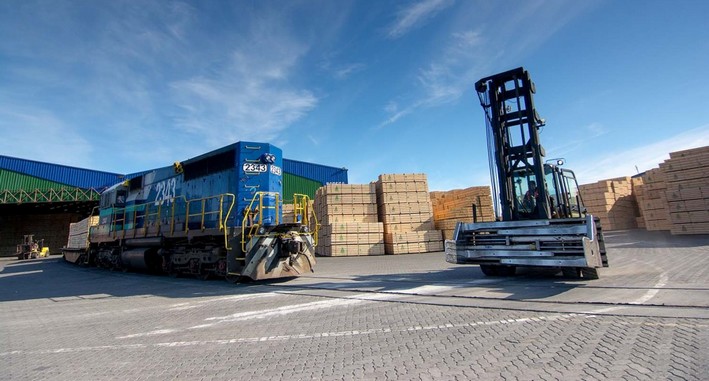Regional Economic Report Highlights the Weight of the Forestry Sector in the Biobío Economy
The launch of the 57th edition of the Regional Economic Report (IER), developed by the Faculty of Economic and Administrative Sciences at the University of Concepción, once again highlighted the centrality of the forestry sector in Biobío's productive activity.
According to the report, during 2024, forestry exports exceeded US$3.638 billion, representing 70% of the regional total. In the first half of 2025, despite the overall contraction in external sales (-6.5% compared to the same period the previous year), the forestry industry maintained its dominance, contributing 65% of exports.
Exports and External Demand
The IER warns that the regional economy remains marked by a strong dependence on external demand, particularly for pulp, wood panels, and frames. This pattern has been a driver of sustained growth, although it also exposes Biobío to international volatility and the contraction of trading partners.
During 2023, the regional GDP grew a notable 5.9%, but by the end of 2024, the figure moderated to 2.5%, in line with the global slowdown. However, the beginning of 2025 brought encouraging signs: the regional GDP advanced 4.4% in the first quarter, surpassing the national average, driven by goods production and, within it, the forestry push.
Internal Consumption and Employment
The document also emphasizes that the external dynamism contrasts with the weakness of internal demand. Household consumption and investment remain stagnant, reflecting low momentum in the local market. Internal demand in the region barely grew by 0.4% in 2024 and fell again in the first quarter of 2025 (-0.2%).
The labor market remains strained: job creation in Biobío reached only 1.1%, compared to a 3.6% increase in the labor force, which has raised the unemployment rate and shows that the region has not yet recovered to pre-pandemic levels.
Voices from the Analysis
For the director of the IER, Iván Araya Gómez, the evolution of national and regional inflation will be key in the short term: "We continue to maintain that inflation during this year should continue its path towards the central target of 3%, so we believe that inflation this year will be 4%," he stated.
Meanwhile, the Regional Ministerial Secretary of Finance for Biobío, Sebastián Rivera Yáñez, highlighted the relevance of having a detailed regional analysis: "This is important for designing public policies with a regional perspective that complements the national one."
Rivera emphasized that the region needs stability in policy implementation and public-private partnerships that strengthen employment, investment, and exports: "Adequate incentives are required that aim to broaden the regional productive matrix," he specified.
A Forestry Region in Search of Diversification
Biobío thus consolidates itself as a region whose growth largely depends on the forestry industry, but whose challenges are concentrated on diversifying its productive matrix, revitalizing internal consumption, and improving job generation.
The report posits that, although the strength of forestry exports has sustained the regional economy, the future demands balancing this engine with new industrial and service activities that allow facing international volatility and generating more inclusive and stable development.

















